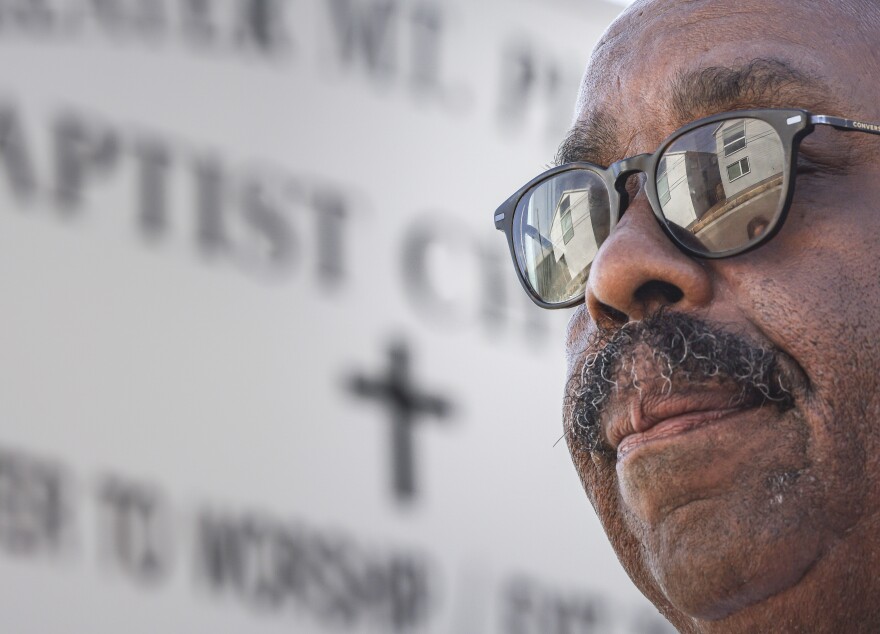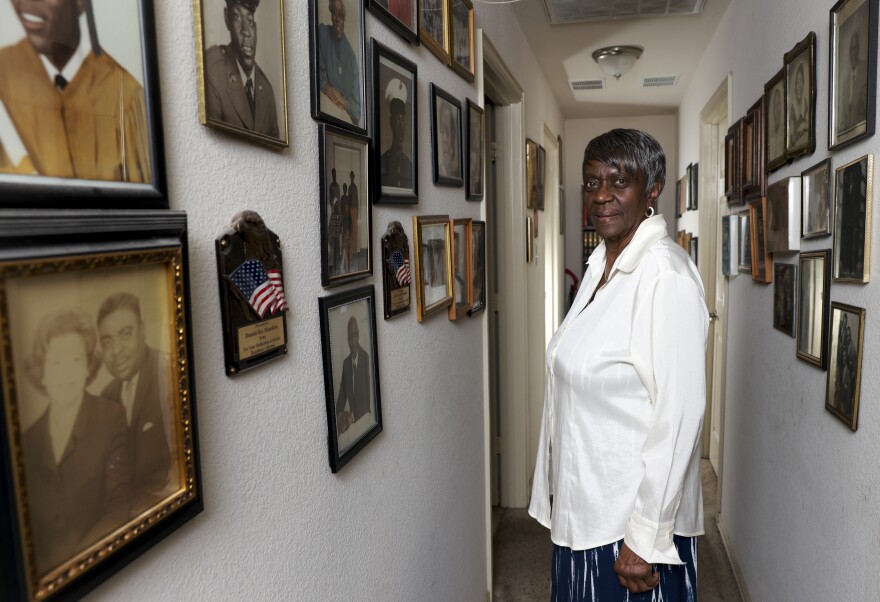The phone won’t stop ringing at Gloria Johnson’s home. This is the third call she’s received in the last hour. All three callers want to buy her home, and her answer is always the same.
“No, ma’m. The property is not for sale.”
Johnson’s house sits in one of the hottest real estate plays in Dallas – the West Dallas neighborhood of Gilbert-Emory. It’s named for Nathan and Margaret Gilbert, and Cecil and Helen Emory, the two Black families who owned grocery stores that helped keep community residents fed at a time when segregation didn’t allow them to shop in white neighborhoods.
Today, the rapid sweep of gentrification — one of the fastest in Dallas — has already wiped away many of the old homes in the once redlined area. Johnson feels like developers have stolen the identity of the historically Black neighborhood.
“We actually feel like the place that time has forgotten,” Johnson says. “Not important. Not significant. They don’t care.”
A decade ago, a 600-square-foot shotgun house would have been valued at about $11,000. Today, it’s overshadowed by a $600,000 three-story townhome with balcony views of the downtown skyline. Within the last year, new townhomes went up, turning Johnson’s block into a dead end.
One way in. No way out.
“They are building around us and, for me, they are trying to motivate me, aggravate me, stimulate me to move quickly because ‘we are going to get this community,’ ” she says of developers.
Most of the people Johnson grew up with no longer live here. In 1990 about half the neighborhood was Black, according to census block data. Now only one-fifth of residents are Black.
Johnson wants to stay. Her father worked two jobs to buy the land where her home now sits.
“We were here before the street was paved,” she says. “My mother was instrumental in getting donations to get the street paved. That was unity. That was community. Gone are those days.”

Dallas historian Donald Payton agrees. He has chronicled Dallas Black history for several decades.
“In just another few years, it's all going to be dog parks and bike paths,” Payton says. “And, if we don’t work to preserve our stories, it's all going to be forgotten.”
Payton says the struggle for residents of Gilbert-Emory is a story repeated throughout Dallas and across the nation. It’s about the struggle to persevere and preserve as pricey development threatens housing in historically Black neighborhoods.
“When you say gentrification, that’s a new word,” he says. “At one time it was called ‘urban renewal,’ then it was called ‘urban redevelopment,’ and then it all boils down to relocation.”
Research shows Black homeownership rates in Dallas are much lower than those of whites. Payton says the effect is loss of generational wealth, black culture and community.
He remembers visiting Gilbert-Emory in the 1950s when he was a boy. He would get his hair cut by the gregarious one-armed barber.
“Mr. Posey’s Barber Shop is where the men hung out,” Payton says. “Our culture is built around barbershops, beauty shops, cafés, and the church was our shelter in the times of the storms.”
Sunlight streams through the amber-colored windows of the Greater Mount Pilgrim Church on Bayonne Street. It’s the largest church in Gilbert-Emory. These days, most of the congregants don’t live here anymore. They have moved to other neighborhoods.
Even so, Pastor Ned Armstrong says, the church is here to stay.
“This has been a strong community for years,” Armstrong says. “The foundation was laid here.”
Armstrong says he’s reached out to their new neighbors, leaving fliers and information about the church, and he says they have had a couple of new visitors.
But he also says the church received a noise complaint from one of its neighbors a few weeks ago, and that hurt. Speakers sit outside the building, amplifying the sermons and songs into the parking lot for parishioners who prefer to sit outside. Outdoor services were created during the pandemic.
Several years ago, Pastor Armstrong says, the church tried to buy the land across Bayonne Street that had housed the beloved Frederick Douglass school.
The Frederick Douglass school was so significant that many longtime neighbors, like Gloria Johnson, still use the abolitionist’s name when referring to the neighborhood. The school produced its own set of teachers and even a school principal.
After the school closed in 1980, some community members hoped to see the land turned into a city park. Armstrong wanted a community center. But six years ago, Dallas ISD sold the land to a private developer for $1.7 million dollars.

“They came in, and we can’t compete with those guys. They have millions of dollars,” Armstrong says. “Next thing we know, it was sold. Boom. No notice. Man, really. That was pretty cruel. They didn’t want to sell it to the church.”
Now the only way you’d know the school had once stood there is a street sign leading into the housing complex.
Gloria Johnson says that’s not enough.
“Where’s the concern? Where’s the love?” Johnson asks. “If that was the concern, we would have had a street, a whole street. Not a block. But you didn’t. You do not care.”
Now there are 27 gray townhomes on the lot that was home to one of the oldest Black schools in Texas. Their price tags start above $500,000.
This article was reported and edited cooperatively by The Dallas Morning News, the Dallas Free Press and KERA, which participate in the Dallas Media Collaborative, a group of local news outlets, universities and nonprofits focused on covering affordable housing with a solutions-oriented approach.




